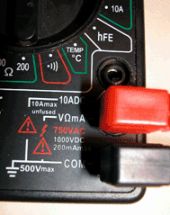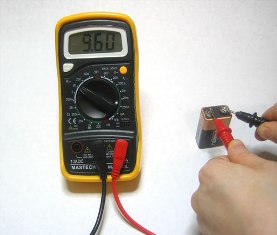How to use a multimeter
Digital multimeter — this is one of the most important and necessary devices used in the process of repairing various equipment. With the help of such a device, you can get a lot of information, perform a large number of measurements and, in many cases, accurately diagnose a malfunction.
Before the advent of modern digital multimeters, everyone used conventional dials. Of course, they have their advantages, but in most cases a digital device is much preferable, since, firstly, you do not have to stare at the scale, distracting from the repaired device and risking something short, and secondly, the readings of well-tuned digital multimeters, as a rule, much more accurate than "arrow" analogues.
What are multimeters
There are many types of devices, from the cheapest and simplest to the extremely expensive and truly versatile. Such multimeters differ in quality, measurement accuracy and, of course, functions. It should be added that the devices can also be fake. The cunning Chinese fake multimeter of many famous companies.I think it is not worth talking about the quality, accuracy and service life of such devices, and everything is clear.
What can multimeters do?
As mentioned above, it all depends on the complexity of the device. However, there is a certain set of functions that absolutely all models support.
First of all, it is the measurement of AC and DC voltage, resistance and current measurement. Most multimeters also have the ability to measure transistor gain and have a diode test mode.
The cheapest multimeter, which has all the above «capabilities», costs about 150-300 wooden rubles. It will certainly support some other modest but useful features like short circuit continuity, low frequency generator, etc. The disadvantage of such cheap devices is primarily the small size of the screen and, as a rule, rather narrow measurement limits. For example, an inexpensive device can measure resistance in the range of 0.1 Ohm to 2 MΩ, while models in the «middle» price category are from 0.1 Ohm to 200 MΩ. This also applies to other features of the device.
More expensive devices that support additional interesting functions cost from 800 to 5000 rubles. In addition to the above capabilities, they are able to measure temperature, capacitance of capacitors, inductance of coils, etc. Naturally, it is preferable to buy devices of this class, because, in addition to everything said above, they are made much better than their "junior" counterparts and "live" longer.
Measurement limits

An unprepared reader may have a question, why are there so many measurement limits? This is done to know exactly the value displayed on the multimeter screen.
Suppose you are measuring the resistance of a 20 kΩ resistor, but you do not know its value, and you see the number 20 on the screen.
If there were no limits and the resistance measurement would be on one limit (0 — 200 MΩ), it would not be clear what number this is, whether 20 Ohm, or 20 kΩ, or perhaps 20 MΩ. In addition, limits are used to set the accuracy of the measurement: the more precisely the set limit corresponds to the measured element, the more accurate the measurement result will be.
We use a multimeter
Now we will look at each individual characteristic of the multimeter in more detail and understand how to use it correctly so as not to burn anything. Let's start with the resistance scale.
How to measure resistance
How to measure DC voltage
How is AC voltage measured?
How to measure direct current and alternating current
How to measure capacity
How to make a clock face
How to check the gain of transistors
Low frequency signal generator
We train on the power supply
Download the article "How to use a multimeter" (PDF, 0.5 mb)

